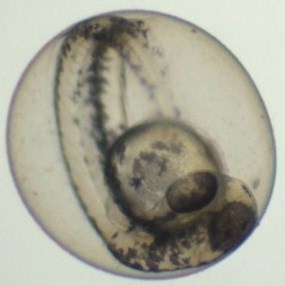Contact
gunnar.carlsson@slu.se, 018-67 11 45, 070-403 29 26
stefan.orn@slu.se, 018-67 11 78
Department of Aquatic Sciences and Assessment, Division of Environmental Organic Chemistry and Ecotoxicology

Sewage effluent ozonation can reduce concentrations of chemical pollutants including pharmaceutical residues. However, the formation of potentially toxic ozonation byproducts (OBPs) is a matter of concern. This study sought to elucidate toxicity mechanisms of ozonated carbamazepine (CBZ), an anti-epileptic drug frequently detected in sewage effluents and surface water, in zebrafish embryos (Danio rerio).
Embryos were exposed to ozonated and non-ozonated CBZ from 3 h post-fertilization (hpf) until 144 hpf. Embryotoxicity endpoints (proportion of dead and malformed embryos) were assessed at 24, 48, and 144 hpf. Heart rate was recorded at 48 hpf.
Exposure to ozonated CBZ gave rise to cardiovascular-related malformations and reduced heart rate. Zebrafish embryos exposed to ozonated CBZ displayed a lack of swim bladder development. Hence, the expression patterns of CBZ target genes involved in cardiovascular and embryonal development were investigated through a stepwise gene co-expression analysis approach. Two co-expression networks and their upstream transcription regulators were identified, offering mechanistic explanations for the observed toxicity phenotypes.
The study presents a novel application of gene co-expression analysis elucidating potential toxicity mechanisms of an ozonated pharmaceutical with environmental relevance.
https://doi.org/10.1016/j.chemosphere.2021.130282
J Pohl, O Golovko, G Carlsson, S Örn, M Schmitz, E Pashay Ahi. Gene co-expression network analysis reveals mechanisms underlying ozone-induced carbamazepine toxicity in zebrafish (Danio rerio) embryos. Chemosphere (2021), volume 276, 130282
gunnar.carlsson@slu.se, 018-67 11 45, 070-403 29 26
stefan.orn@slu.se, 018-67 11 78